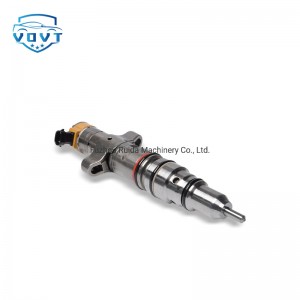New High Quality Diesel Injector 229-5918 10R-1814 116-5425 161-1708 For CAT C12
Products Description
| Reference. Codes | C12 |
| Application | C12 |
| MOQ | 4PCS |
| Certification | ISO9001 |
| Place of Origin | China |
| Packaging | Neutral packing |
| Quality Control | 100% tested before shipment |
| Lead time | 7~10 working days |
| Payment | T/T, L/C, Paypal, Western Union, MoneyGram or as your requirement |
How to reduce diesel engine emissions by optimizing injector characteristics?
Specific measures to optimize injector characteristics to reduce emissions
Based on the relationship between injector characteristics and emissions, the following optimization measures can be taken to reduce diesel engine emissions:
Optimize injection pressure: Use advanced technologies such as high-pressure common rail injection system to increase injection pressure and achieve precise control of injection pressure. Adjust injection pressure according to combustion requirements under different working conditions. For example, under low-load conditions, appropriately reduce injection pressure to avoid excessive NOx due to excessive combustion temperature; under high-load conditions, increase injection pressure to ensure sufficient atomization and combustion of fuel and reduce emissions of pollutants such as PM. At the same time, it is necessary to comprehensively consider the balanced effect of injection pressure on NOx and other pollutant emissions, and determine the optimal injection pressure range through experiments and simulations.
Precisely control injection timing: Use electronic control technology to achieve precise adjustment of injection advance angle. Adjust injection advance angle in real time according to engine speed, load and other working parameters. For example, when the engine is started and running at low load, the injection advance angle is appropriately delayed to reduce the combustion temperature and reduce the generation of NOx; under medium load and high load conditions, according to the comprehensive requirements of combustion efficiency and emission, the appropriate injection advance angle is selected to ensure power while reducing pollutant emissions. In addition, multiple injection technologies such as pre-injection, main injection and post-injection can also be used. Pre-injection can inject a small amount of fuel before the main injection to form a local combustible mixture in the cylinder, start combustion in advance, reduce the combustion pressure and temperature during the main injection, and thus reduce NOx emissions; post-injection can inject a small amount of fuel after the main injection, and use high-temperature fuel gas to further burn the incompletely burned fuel, reducing PM emissions.
Optimize the flow characteristics of the injector: The flow characteristics of the injector can be adjusted by improving the structural design of the injector, such as changing the shape, size and number of the spray holes. For example, the use of a gradually expanding spray hole or a multi-spray hole structure can achieve a flow characteristic with a low initial injection rate and a high later injection rate. The low initial injection rate can reduce the heat release in the initial stage of combustion and reduce the generation of NOx; the high injection rate in the later stage helps the fuel to burn fully and reduce the emission of pollutants such as PM. At the same time, the flow characteristics of the injector should be optimized according to the parameters such as the cylinder diameter and the shape of the combustion chamber of the engine, so that the distribution of the fuel in the cylinder is more reasonable and the mixing efficiency and combustion efficiency are improved.
Improve the spray characteristics of the injector: By optimizing the spray parameters of the injector, such as the spray cone angle, spray range and oil mist particle distribution, the fuel spray is matched with the shape of the combustion chamber and the air flow movement. For example, for combustion chambers of different shapes (such as ω type, basin type, etc.), select the appropriate spray cone angle and range so that the fuel spray can be evenly distributed in the combustion chamber to avoid fuel accumulation in the cylinder wall or piston top and other parts. At the same time, the advanced manufacturing process of the injector, such as laser drilling, is used to improve the processing accuracy of the spray hole, make the oil mist particles smaller and more evenly distributed, improve the mixing speed and mixing quality of fuel and air, promote complete combustion, and reduce emissions.


















